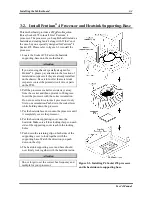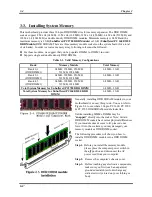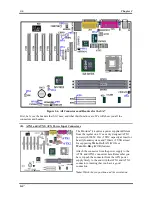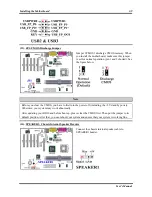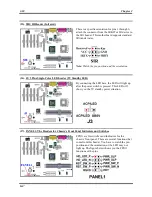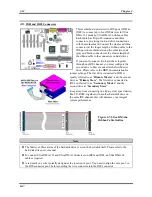
Chapter 4
SA7
4-2
Note
Parts of the screenshot may not same as you see on your screen, because the BIOS version may
change periodically. However, most of the functions covered in this manual will work. We suggest
that you go to our WEB site often to see if there are new manual releases
.
Then you can check the
newly updated BIOS items.
Computer Knowledge: CMOS Data
Maybe you have heard somebody saying that his or her CMOS DATA was lost. What is the CMOS? Is
it important? The CMOS is the memory used to store the BIOS parameters that you have configured.
This memory is passive. You can read its data, and you can also store data in it. But this memory has
to be powered by a battery, in order to avoid any loss of its data when the computer is turned off.
Since you may have to change the CMOS battery when it is out of power and if doing so, you will
loose all CMOS data, therefore, we recommend that you write down all the parameters of your
hardware, or to put a label with these parameters on your hard disk.
4-1. CPU Setup [SOFT MENU
™
]
The CPU can be setup through a programmable switch (
CPU
SOFT MENU
™
), that replaces the
traditional manual hardware configuration. This feature allows the user to more easily complete the
installation procedures. You can install the CPU without configuring any jumpers or switches. The CPU
must be setup according its specifications. In the first option, you can press <
Enter
> at any time to
display all the items that can be chosen for that option.
CPU Name Is:
Intel
®
Pentium (R) 4
CPU Operating Speed:
This option sets the processor speed. In this field, the processor speed is indicated like this: Processor
Speed = External Clock x Multiplier Factor. Select the processor speed according the type and speed of
your processor. For Intel
®
Pentium
®
4 processors, you can choose from the following settings from 800
(400 MHz FSB CPU) ~ 2400 (400 MHz FSB CPU) or 1066 (533 MHz FSB CPU) ~ 3200 (533 MHz FSB
CPU), and User Define.
Note
The display of this item might be different when you installed the different type of processors. We just
show you an example here.
User defined external clock and multiplier factor:


